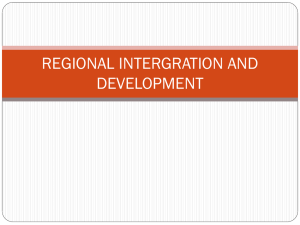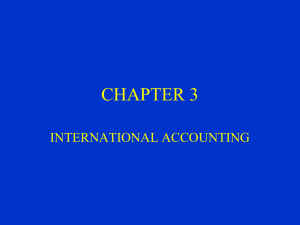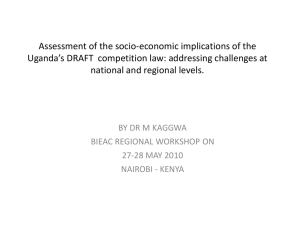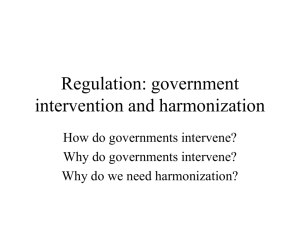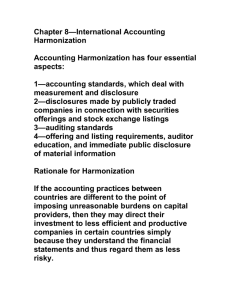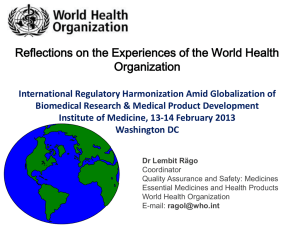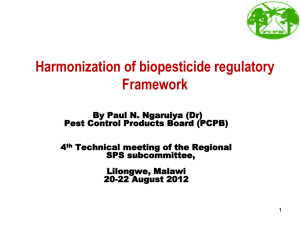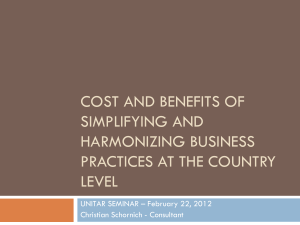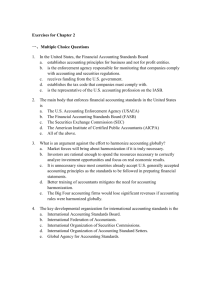PILAC Harmonization paper
advertisement
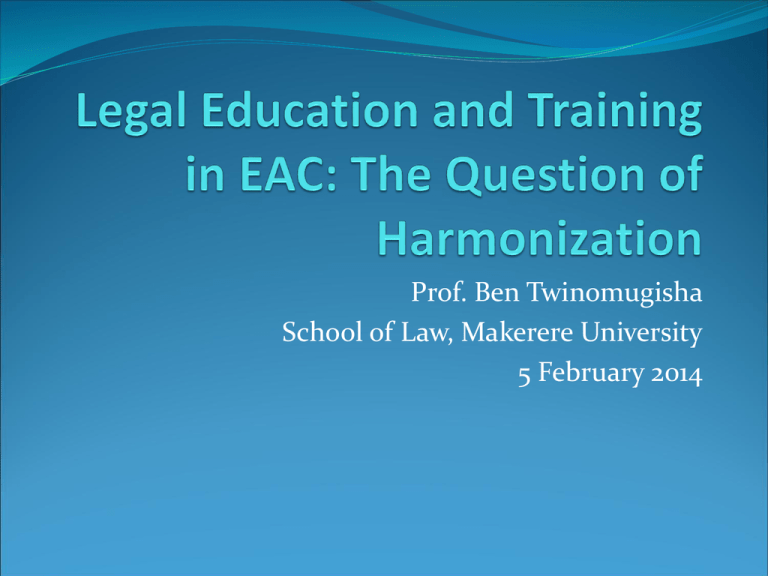
Prof. Ben Twinomugisha School of Law, Makerere University 5 February 2014 Outline of Presentation Introduction Brief comment on the East African Community (EAC) Nature (state?) of legal education and training in EAC Challenges of legal education and training in EAC Why harmonization? Attempts at harmonization Conclusion State of LET in EAC History of legal education and training in EAC Legal systems in EAC; accreditation University legal education and training Post-university legal education and training Continuing legal education (CLE) Judicial (education) and training Liberalization (commercialization?) of university legal education and training Should post-university legal education be liberalized? Challenges Looking back: pre-university education Liberalization/marketization/commodification of legal education and training Similar challenges in EAC with regard to effect of liberalization on quality Numbers, infrastructure, resources and materials, quality of faculty etc Legal systems, language; Differences in admission criteria, curricula, examinations Why harmonization? Harmonization v. uniformity; minimum standards; no disruption but enhance national programmes Dictates of the law: article 26 of the EAC treaty: (1)Partner states to harmonize their legal training (2)Establish a common syllabus for the training of lawyers and common standards to be attained in examinations in order to qualify and to be licensed to practice as an advocate Establish synchronized legal education systems as a strategy for enhancing capacity to meet emerging needs Why harmonization? Ctd Facilitate mobility of students and faculty Tool for improvement of quality of law graduates entering the professional field Need to produce highly qualified students and faculty Instituting a greater sense of professionalism Stronger foundation in doctrine, concepts and principles Development of deeper policy analysis skills Why harmonization Ctd Development of strong writing skills Development of strong advocacy skills Development of a strong ethics sense Imparting students with theoretical and technical skills and also enable them to understand the law within its social, economic, political and cultural perspectives. Cross-border legal practice Attempts at harmonization Study on harmonization of the East African education systems; focusing on primary, vocational and secondary schools EAC regional study with a view to harmonize legal training curricula and the legal and regulatory framework governing legal training and practice within the community Harmonization: Admission Standards Law schools: common written entrance examination Post university law training institutions: common written mini-bar examination Admission to the bar: common written bar examination Harmonization: Curriculum Core subjects: to be studied by all LL.B students Electives Multi-disciplinary courses Student centred; problem-based learning Seminars; internship Clinical/practical work at university Practical training at post university Progressive implementation Bear in mind challenges: the resource envelope Conclusion Harmonization is a legal requirement; Harmonization critical for legal professionalism Student centred, problem based learning; imparting of practical skills Challenges exist but are surmountable
